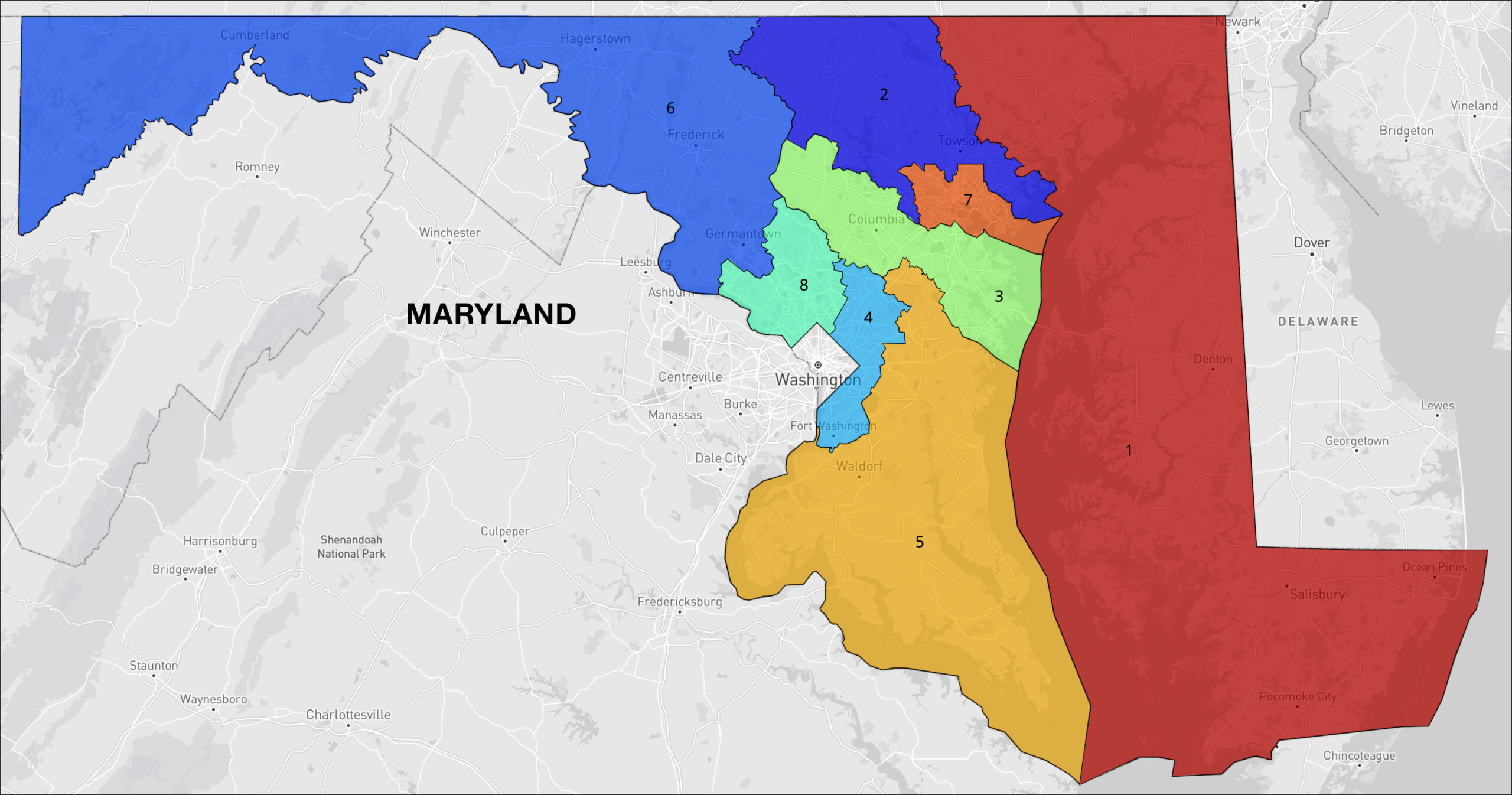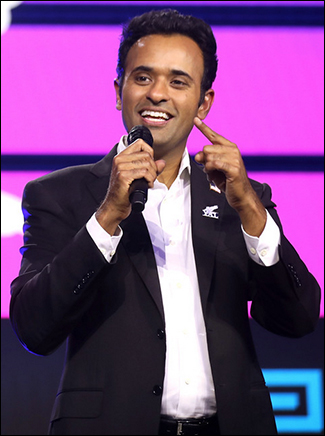By Jim Ellis — Monday, April 28, 2025
House
Part IV concludes our House Overview analysis. Today’s edition covers districts in Ohio through Wisconsin. If a state is not listed, it means there are no major developments currently affecting the sitting incumbents.
Ohio
 OH-9 — Rep. Marcy Kaptur (D-Toledo) was originally elected to Congress in 1982 and ranks as the fourth-most senior member of the House. In a western Ohio Toledo-anchored 9th District that no longer stretches to Cleveland to provide more Democrats, Kaptur has had two recent competitive elections, and particularly so in 2024.
OH-9 — Rep. Marcy Kaptur (D-Toledo) was originally elected to Congress in 1982 and ranks as the fourth-most senior member of the House. In a western Ohio Toledo-anchored 9th District that no longer stretches to Cleveland to provide more Democrats, Kaptur has had two recent competitive elections, and particularly so in 2024.
The veteran Congresswoman was re-elected with just a 48.3 – 47.6 percent victory margin over then-state Representative Derek Merrin. It remains to be seen if Merrin returns for a re-match, but the Republicans are again guaranteed to field a strong candidate.
The wild card for Ohio congressional races is the impending redistricting. The state has one of the most complicated redistricting systems involving a legislative commission, a vote in the full legislature, and a statute that allows the districts to stand for only a four-year period if a vote of less than three-fifths of the legislature votes to adopt. That happened in 2021, so the congressional lines are supposed to be redrawn before the 2026 election. The new map will definitely have a major effect upon the 9th District race.
OH-13 — The redistricting situation could be definitive for Rep. Emilia Sykes (D-Akron) as she runs for a third term. In November, the Congresswoman recorded only a 51-49 percent victory margin over former state legislator Kevin Coughlin (R). The 2026 race will again be competitive since Coughlin has already announced he will return for a re-match.
Pennsylvania
PA-7 — Freshman Rep. Ryan Mackenzie (R-Lower Macungie) unseated three-term Rep. Susan Wild (D) in November with a one-point margin. The former Congresswoman says she will not return in 2026 but has an unnamed candidate that she wants to support. Northampton County Executive Lamon McClure (D) is an announced candidate but raised only $140,000 in the first quarter. Therefore, McClure is not likely Wild’s mystery candidate.
Regardless of who the Democrats ultimately nominate, this will be a hotly contested race that will go a long way toward determining the next House majority.
PA-8 — Freshman Rep. Rob Bresnahan (R-Dallas Township) unseated six-term Rep. Matt Cartwright (D) in November with a 51-49 percent vote margin. Cartwright confirms he is considering returning for a re-match. Until he makes a decision, the rest of a potential Democratic candidate field is figuratively frozen. This district will again host a tight contest, so expect a major campaign to again unfold in this Scranton-anchored CD irrespective of whom the Democrats nominate to challenge Rep. Bresnahan.
South Carolina
SC-1 — Three-term Rep. Nancy Mace (R-Charleston) is seriously considering a run for Governor, meaning the coastal 1st Congressional District could be open in 2026. Should Rep. Mace run for re-election instead of statewide, she will be safe in a general election battle. With the Dave’s Redistricting App statisticians calculating a 55.6R – 42.3D partisan lean, the GOP will be in strong position to hold the seat with another candidate. Likely the area politics will be in a state of suspension until Rep. Mace makes a final decision about running for Governor.
SC-5 — As with Rep. Mace in South Carolina’s 1st CD, five-term 5th District Rep. Ralph Norman (R-Rock Hill) is also considering entering the state’s open Governor’s race. In a recent quote, Norman indicated he is “about 65 percent sure” that he will run statewide.
The 5th CD is also solidly Republican (Dave’s Redistricting App partisan lean: 58.4R – 39.8D), so winning the GOP primary is tantamount to election. Here, too, a presumed congressional candidate field is frozen until Rep. Norman makes a final decision about his potential statewide bid. If both the 1st and 5th Districts are open, we can expect crowded and highly competitive Republican primaries in each location.
South Dakota
SD-AL — The South Dakota congressional situation is another where a Governor’s race is playing a major role as to the outcome of an eventual campaign for the US House. Four-term at-large Rep. Dusty Johnson (R-Mitchell) is contemplating a run for Governor, but the new incumbent, Larry Rhoden who ascended to the state’s top job when then-Gov. Kristi Noem (R) was appointed Homeland Security Secretary, has not yet indicated whether he will run for a full term.
Most politicos, however, believe Rep. Johnson will jump into the Governor’s race irrespective of Gov. Rhoden’s plans. His 1st Quarter fundraising certainly suggests such. Johnson raised just under $800,000 for the three-month period but maintains almost $6 million in his campaign account. Therefore, Rep. Johnson already has the necessary resources to fully compete in a statewide race.
Should the Congressman run for Governor, as in several other states, we will see a crowded open-seat Republican primary form with the eventual winner punching his ticket to Washington, DC.
Tennessee
TN-6 — The middle Tennessee 6th Congressional District situation is similar to those described in South Carolina and South Dakota. Here, Rep. John Rose (R-Cookeville) has already announced his candidacy in the open Governor’s race, a move that many believe will be a political suicide run against Sen. Marsha Blackburn (R), who appears set on running to succeed term-limited GOP Gov. Bill Lee.
With Rep. Rose in the Governor’s race, we see talk about others running for Congress but, so far, no real action. A crowded Republican primary is expected, which may feature former Congressman Van Hilleary, who has been serving as Rep. Rose’s chief of staff, state House Speaker Cameron Sexton (R-Crossville), and as many as two state Senators and two other state Representatives. A crowded field will form and the eventual Republican nominee will succeed Rose as the new member.
Texas
TX-18 — The death of freshman Rep. Sylvester Turner (D-Houston) has led to a special election being called concurrently with the state’s municipal elections scheduled for Nov. 3. If no candidate receives majority support in the initial vote, Gov. Greg Abbott (R) then will schedule a secondary election for the top two finishers. Such a runoff, which is likely and could well feature two Democrats, would probably be scheduled for Dec. 16.
Fifteen Democrats, three Republicans, and four Independents have already announced their candidacies. At this point, the top two candidates appear to be Harris County Attorney Christian Menefee (D) and former Houston City Councilwoman and ex-Senate and House candidate Amanda Edwards (D). With a partisan lean rating of 73.6D – 24.4R (Dave’s Redistricting App), the Democrats are a lock to keep this seat.
TX-28 — Twenty-year incumbent Congressman Henry Cuellar (D-Laredo) has won his past two elections from this South Texas congressional district with a federal bribery indictment hanging over his head. In November, he defeated retired Navy officer Jay Furman (R), who moved to the state just to challenge Cuellar.
It is likely the Congressman will face stiffer competition in 2026. Former 34th District Congresswoman Mayra Flores (R) has announced her candidacy. Before that, Republican leaders were looking to recruit Webb County Judge (Executive) Tano Tijerina. It remains to be seen just who Rep. Cuellar will face, but we can expect a highly competitive 2026 contest in this heavily Hispanic (72.9 percent of the CD Voting Age Population) Texas district.
TX-38 — Two-term Rep. Wesley Hunt (R-Houston) holds a safe Republican seat wholly within Harris County, but he may be moving into a statewide race. There is no question Rep. Hunt is testing the political waters for a Republican primary challenge to Sen. John Cornyn (R) and should he enter the race that also includes Attorney General Ken Paxton (R), we can expect a very crowded Republican primary field vying to replace the Congressman.
Hunt has averaged 63 percent of the vote in his two 38th District elections. President Donald Trump carried the seat by 21 percentage points. Therefore, if Rep. Hunt runs for the Senate, the open 38th would then again be decided in the Republican primary.
Wisconsin
WI-1 & 3 — The major question that must be answered before beginning to analyze the Wisconsin congressional races is will there be a mid-decade congressional redistricting? If the state Supreme Court decides to redraw the boundaries in response to a lawsuit, then 1st District Rep. Bryan Steil (R-Janesville) and fellow 3rd District Republican Rep. Derrick Van Orden (R-Prairie du Chien) will be in serious political trouble. If the map remains constant, then Rep. Steil would be a clear favorite for re-election, while Rep. Van Orden would again face a competitive opponent.
In November, Steil, running for his fourth term, defeated Democratic former Congressman Peter Barca by 10 percentage points, 54-44 percent in a district where the Dave’s Redistricting App statisticians project a partisan lean of 49.4R – 48.3D. President Trump carried the seat 51.5 – 47.0 percent.
Rep. Van Orden’s 3rd District lies in Wisconsin’s western sector anchored in the city of La Crosse. The Congressman won a second term with a 51-49 percent margin over businesswoman Rebecca Cooke (D).
Though Cooke is returning for a re-match, she faces significant Democratic primary competition in the persons of Eau Claire City Council President Emily Berge (D), and former Eau Claire City Councilmember Laura Benjamin (D). Even in the present district configuration, Rep. Van Orden can count on again being forced to wage a major re-election campaign.
The Wisconsin Supreme Court forced a redraw of the state Assembly and Senate districts in 2023 on partisan gerrymandering grounds but left the congressional map intact. It remains to be seen what decision the new state Supreme Court will soon render for the 2024 elections.







